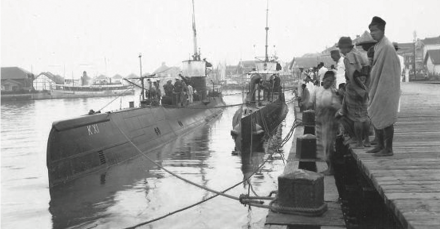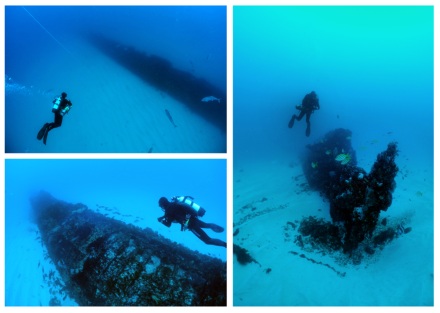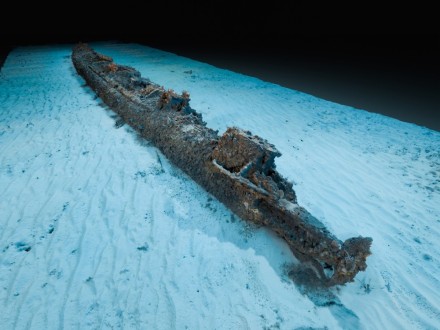History
HMNLS K XI was built in Fijenoord, Rotterdam between 1922 and 1924 for the Royal Netherlands Navy, designed for long range patrols in the extensive tropical archipelagic waters surrounding the NEI Netherlands East Indies (NEI). It was the first of three boats in the K XI class constructed between 1922 and 1926.

The K XI before the war in Macasser
War
With the threat of Japanese invasion of Malaya and the NEI, the American-British-Dutch-Australia (ABDA) alliance was formed in December 1941 to try and repel the Japanese.
K XI featured in a notable episode in Australia’s World War 2 history when on 9 March 1942 it rescued thirteen survivors from the 151 crew of the Royal Australian Navy’s (RAN) minesweeping sloop HMAS Yarra (II), sunk in action by a strike force of the Japanese cruisers Atago, Takao and Maya with two accompanying destroyers about 500 km south of central Java on 4 March 1942.
K XI spent most of the rest of the war based in Karachi, Pakistan and Bombay, India, before coming to Fremantle in August 1945.
After the war
Of all the Allied submarines to have been based in Fremantle just two were wrecked in Western Australian waters, both of them being Dutch— K VIII and K XI— both being an older type that were obsolete
After K XI had been stripped, on 1 September 1946 it was towed out to the Graveyard and scuttled in a position reported as 32°03’ and 115°22’, inside the designated Commonwealth Area No.7 in the Rottnest Ship’s Graveyard, which would place it in around 70-80m depth. Interestingly, the actual location of the site is well outside the official ship dumping area, lying 15km southeast of the reported scuttling position in 40m depth.
Site Discovery – 1st of January 2025
K XI was discovered by Andrew Oakeley (WreckSploration), David Jackson (Diving WA Shipwrecks), and Patrick Morrison (WA Museum) on the 1st of January 2025.

The site was recorded by WreckSploration’s technical diving team on the 11th of January 2025. This fieldwork was financially supported by the Cultural Heritage Agency of the Netherlands. Their International Maritime Heritage Team globally manages shipwrecks with ties to the Netherlands (Manders et al 2022). Divers used JJ-CCR rebreathers with Trimix 21/20. Depth was 40 m to the sand, with reported max depth at 38 m. The dive was completed with a 35min bottom time, and a 56min total dive time.
Alex Aberle-Leeming and David Jackson measured the length of the vessel by tape at 65.5m. David Jackson photographed details of vessel with reference to historical features, noting the wreck is substantially buried (Figure 6). The torpedo tubes (Figure 8) hatches and conning tower (Figure 9) [MM1] are all obvious on the wreck. Martin Bovingdon and Craig James recorded images of detail and divers working.

Description
Site name: K XI Submarine (Site 45, Rottnest Deepwater Graveyard).
Built: Feijenoord , Rotterdam , 1922.
Commisioned: 24 March 1925
Dimensions : 66.7 m length, 6.15 m width, 3.78 m draught
Displacement: 688 tons surfaced, 828 tons submerged
Propulsion: two 1,200 bhp M.A.N. diesel engines and two 327 bhp electric motors
Range: 6,500km at 8 knots on the surface, or 46km at 8 knots submerged
Max. Speed: 17 knots surfaced, 8 knots submerged
Armament: 6 x torpedo tubes (2 x 21 inch bow tubes, 2 x 17.7 inch bow tubes, 2 x 17.7 inch stern tubes) 1 x 88m Bofors gun 1 x 12.7mm machine gun
Crew: 31
Status
Legal Protection
As an historic shipwreck over 75 years old in Australian waters the wreck of K XI is automatically protected by the Commonwealth Underwater Cultural Heritage Act 2018. Recreational diving on the wreck is allowed without any permit being required, but it is an offence to damage, disturb or remove any part of the wreck.
Download report (Report 356 pdf)
References
- defensieweb.
- Patrick Morrison, David Jackson, Andrew Oakeley, Aurora Philpin, Martijn Manders, Ross Anderson (2025).
Dutch K XI Submarine (1925-1946) discovered off Wadjemup Rottnest Island, Perth.
Report No. 356 - Western Australian Museum.